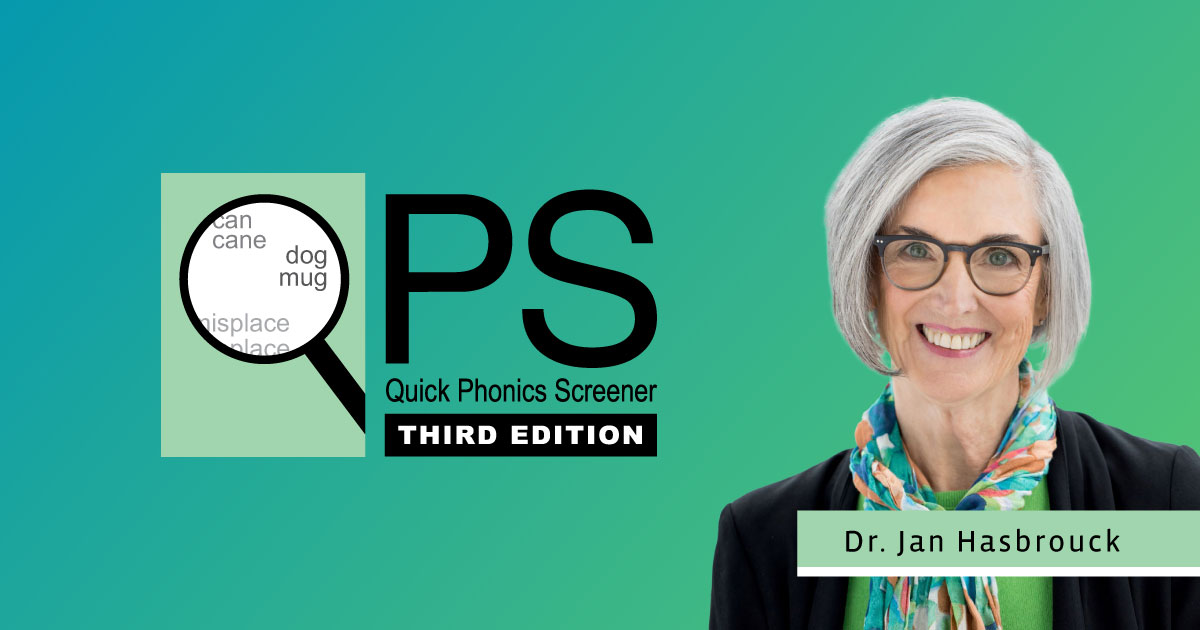 Literacy researcher Dr. Jan Hasbrouck developed Quick Phonics Screener (QPS) because she needed a systematic and efficient way to diagnose students’ strengths and instructional needs in phonics. QPS measures a student’s ability to recognize, decode, and pronounce all phonics elements from letter names through four-syllable words.
Literacy researcher Dr. Jan Hasbrouck developed Quick Phonics Screener (QPS) because she needed a systematic and efficient way to diagnose students’ strengths and instructional needs in phonics. QPS measures a student’s ability to recognize, decode, and pronounce all phonics elements from letter names through four-syllable words.
Examiners administering QPS score the student’s accuracy on each test element. They are also instructed to pay attention to the rate of the student’s response. Although QPS was not officially developed as a timed assessment, the examiner’s manual states that noting a student’s response rate gives teachers relevant information. According to Hasbrouck, “Accuracy only tells us so much. If we factor in rate, which then allows us to look at automaticity, it tells us a lot more.”
For years, Hasbrouck’s method on QPS assessments has been to mark whether a student responds slowly or quickly. This information, interpreted alongside the student’s score, tends to provide sufficient data about the student’s mastery of a specific skill. However, in recent months, Hasbrouck has experimented with making rate a more official part of the assessment. In the classrooms where she volunteers, she decided to start timing QPS to see if it provided an even better understanding of each student.
“As soon as I started writing down the students’ times, I saw very clear groupings,” Hasbrouck said. “Two kids can get everything correct, but if one completes the assessment in 17 seconds and another completes it in 45 seconds, we know those are two really different kids.”
Hasbrouck concluded that timing QPS is a valuable thing to do, and she would recommend it to those using QPS. “I didn’t want to keep this tip to myself,” Hasbrouck said. “Timing provides a valuable and easily obtained piece of information.” She believes that if examiners start timing the assessment, they’ll have more complete data about whether students have truly achieved mastery, and they’ll be able to more easily group students to differentiate instruction.
Hasbrouck emphasized that examiners should be nonchalant about the timing, emphasizing to the students that this assessment is not about speed. “The point is to indicate mastery or lack of mastery,” she said. “Faster recognition is a sign of mastery, but we are not trying to teach students to do anything faster. As they get closer to mastery, that will show up in automaticity. We’re working on skill development, not speed for the sake of speed.”
If you’re not currently using QPS and are looking for a criterion-referenced, research-based phonics assessment, click here to download a free sample of QPS. For more information or to place an order, click here.

 Share your student’s success story—nominate him or her for our Star of the Month award. Win a Barnes & Noble gift card for the student and a Read Naturally gift certificate for your class!
Share your student’s success story—nominate him or her for our Star of the Month award. Win a Barnes & Noble gift card for the student and a Read Naturally gift certificate for your class!
Post a New Comment